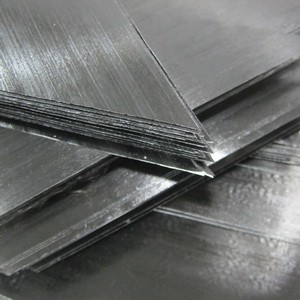I’m going to do a little 4 part mini-series on carbon fiber materials. In this first article we’ll cover where the actual individual fibers come from and in following articles we’ll discuss types of fibers; their characteristics, strengths and weakness. Then we’ll go over the epoxies(matrix) and finally we’ll discuss commercially available products that are commonly used in high-end carbon frames. For a deeper dive into how carbon fiber actually works, check out Jared’s series on anisotropy.
The fibers we make bicycle frames with are a carbon fiber polymer; carbon fibers reinforcing a polymer matrix. In the case of a carbon bike frame the matrix is epoxy. To get started let’s go into a little more detail on the actual carbon fibers than we did in my last post “How a carbon bike is made”. And for an even deeper dive into the properties of carbon and the reasons it possesses such great properties we’ll depend on Jared’s future posts. For now let’s assume carbon is good and jump directly to the material we use when we make a carbon bike.
An interesting little tidbit; carbon fibers were used by Thomas Edison in the first successful light bulb [1].

Figure 2: Source. Rock West Composites.

So obviously carbon fibers are carbon. Where does the carbon come from? Carbon is all over in our world, we use it for heat and it is a requisite for life. Carbon is the 15th most abundant element in earth’s crust and the 4th most abundant element in the universe by mass [2].
There are multiple manufacturing processes commonly used to make carbon fibers. The process starts with a precursor. Basically the precursors are a fossil fuel based product that is drawn into fiber in the same manner as synthetic textiles. Zoltek, parent company of Toray who manufactures most commonly used fibers in carbon bikes explains it like this:
“The raw material used to make carbon fiber is called the precursor. About 90% of the carbon fibers produced are made from polyacrylonitrile (PAN). The remaining 10% are made from rayon or petroleum pitch. All of these materials are organic polymers, characterized by long strings of molecules bound together by carbon atoms. The exact composition of each precursor varies from one company to another and is generally considered a trade secret.” [3]
PAN (Polyacrylonitrile) is used for the fibers we typically build bicycles with. In order to make the PAN fibers into carbon fiber they are stabilized, then carbonized and finally to develop the properties required in applications like a high performance carbon bikes, graphitized as shown in figure 3.
The first step, the stabilization (thermosetting) step, is done to prevent the fibers from melting in the subsequent steps. Thermosetting is done in moderate heat in an air atmosphere and fibers are held by the ends so that when they try to shrink under heat they are essentially stretched [1-2].
The following two steps are done in an oxygen free environment. They are “carbonization” and “graphitization”. We’ll let Jared take this down to the molecular level later on, for now I’ll give you the pedestrian description.
Figure 3: Schematic illustrations of PAN carbon fiber manufacturing processes [5].
The carbonization and graphitization steps are done to incrementally increase the carbon content of the fiber. They take place at high heat in a higher temps than the thermosetting process in a nitrogen environment also under tension as in the first process [1-3]. The carbonization step increases carbon content to roughly 80-95% and graphitization in excess of 99% [1-4]. As noted by Strong [1]:
“The differences in modulus and strength of the fibers are largely dictated by the conditions present during the graphitization. Higher-modulus fibers are processed at higher temperatures for longer times” [1-5].
Once the fibers are produced and graphitized the final steps are surface treating and sizing. Sizing and surface treatment are critical to adhesion with the epoxies when processing and are closely held trade-secrets. From Composites World, “Advances in sizings and surface treatments for carbon fibers”:
“In fact, sizings and surface treatments play vital roles in composite performance: Surface treatment produces additional bonding sites on the fiber surface, while sizing enhances fiber processability with a protective coating on the fiber surface and can provide a coupling agent for the fiber/resin bond [4].
Finally they are ready to be prepared for use. This mean that they can be configured in tows, fabrics or unisheets, each of which we’ll discuss in our final article in this series. But first we’ll want to talk a bit about the different mechanical qualities available and how they apply to a bicycle. My next installment will cover fiber types. If you’d like be notified of future posts you can sign up below.
References
- Strong, Brent A. Fundamentals of Composites Manufacturing: Materials, Methods, and Applications. Society of Manufacturing Engineers 2008
- From Wikipedia, the free encyclopedia. https://en.wikipedia.org/wiki/Carbon
- http://zoltek.com/carbonfiber/how-is-it-made/
- Composites World, Karen Mason 3/1/2004 – “Advances in sizings and surface treatments for carbon fibers”
- https://www.researchgate.net/figure/268444875_fig9_Figure-1-Schematic-illustrations-of-a-PAN-and-rayon-and-b-pitch-carbon-fiber